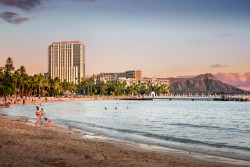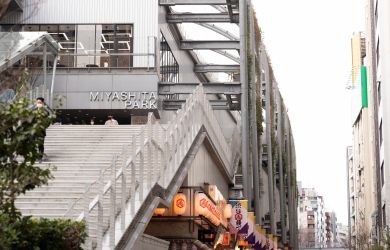
November 5, 2009
Yamadera
The mountain temple complex is enough to bring the bard out in anyone
By Metropolis
Originally published on metropolis.co.jp on November 2009

photos by Alena Eckelmann
When Japan’s most famous poet, Matsuo Basho, was bitten by the travel bug, his wanderlust took him deep into the Tohoku region. During his arduous five-month journey, he also ventured through the province of Yamagata, where he wrote some of his best-known haiku.
As its name (literally “mountain shape”) suggests, two-thirds of Yamagata is mountainous. No wonder, then, that one of the region’s most famous landmarks, Risshaku-ji temple, is nestled into a rocky hill. Commonly known as Yamadera (“mountain temple”), the complex was originally just a network of caves used for prayer and ascetic practice. Over time, buildings were added, and there are now some 40 temple structures dotted around the hillside. The temples and pavilions on the slopes make a picturesque landscape, with the views particularly enchanting in autumn.

Yamadera was established in 860 by Ennin, a monk of the Tendai Buddhist sect, which has its headquarters at Kyoto’s Enryaku-ji temple. At the foot of the hill sits the temple’s main hall, the Komponchodo. This 14th century building shelters the “eternal light of Buddhism,” a flame that Ennin brought the whole way from Kyoto, and which is said to have been burning continuously ever since. However, visitors are left to figure out for themselves which of the temple’s seemingly unremarkable lanterns carries the holy freight.
Walking along the foot of the hill, visitors pass a statue of Basho sitting in travel gear on a rock, seemingly mulling over his next literary effusion. If you want to learn more about this traveler-cum-poet, head to the nearby Yamadera Basho Museum. You can only begin to imagine what kinds of conversations Basho might have had with Ennin, who is said to have written more than 100 books himself, had they actually met at Yamadera.

After passing the Sanmon gate, visitors embark on an exhausting climb up the hill that ends 1,100 or so steps later at Niomon, the entrance to the temple complex at the summit. On the way up, one can catch glimpses of Niomon through the ancient cedar and oak trees lining the way. The staircase winds past forlorn-looking stone lanterns, moss-covered rock carvings and countless weather-beaten Jizu statues, which keep dutiful watch over the huffing and puffing tourists and devotees as they tackle the steep ascent.
Basho changed his travel route on the advice of some locals, walking a few extra miles to get to Yamadera, reaching the temple in late afternoon. Visiting at the same time of day, latter-day travelers can easily imagine the poet contemplating the quiet scenery before writing this masterpiece, which is Japan’s best-known haiku:
In the utter silence
Of a temple,
A cicada’s voice alone
Penetrates the rocks
In front of Okuno-in, the temple on the summit, stands a huge stone lantern, said to be one of the three biggest in Japan. A nearby path leads to the Kaisando, where Ennin is enshrined. From there, one can see the Nokyodo, a small, red-lacquered pavilion sitting atop a cliff, which makes for a nice photo shot whatever the season. Godaido, a terrace precariously perched on the side of a cliff, marks the end of the path. The views over the surrounding area and the mountain scenery are stunning, well worth the strenuous climb and the journey from Tokyo.
Yamadera temple is open 8am-5pm year-round; entry is ¥300. A two-hour temple tour is available at an extra cost of ¥2,000 (advance booking required). For a weekend trip to Yamagata, consider the “Saturday/Sunday Ticket” (do-nichi kippu), which entitles the holder to unlimited travel for the weekend on all JR East trains, including the shinkansen from Tokyo to JR Yamagata station and back, for ¥18,000 (¥9,000/¥3,000 for teenagers/children). Seats are unreserved and the ticket must be purchased at least one day before traveling; note that it is not available at certain times of year, including Dec 28-Jan 6 (www.jreast.co.jp/e/pass/donichi_kippu.html). From JR Yamagata station, the Sendai Line takes you to JR Yamadera in 20 minutes. Yamadera Pension, housed in a traditional wooden building near the temple, is recommended for overnight stays (http://tinyurl.com/yamadera).







